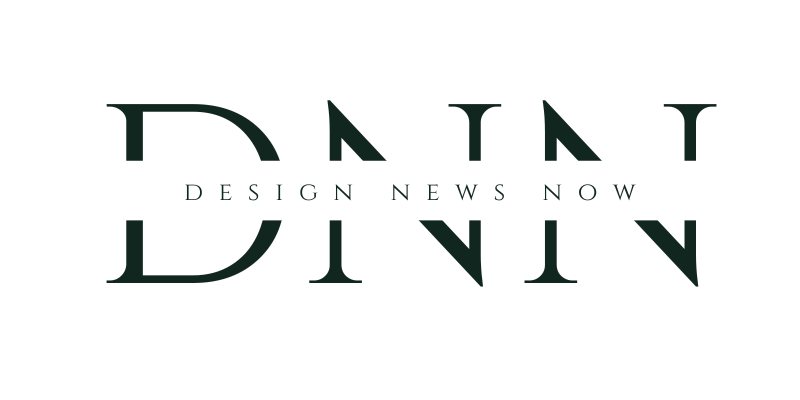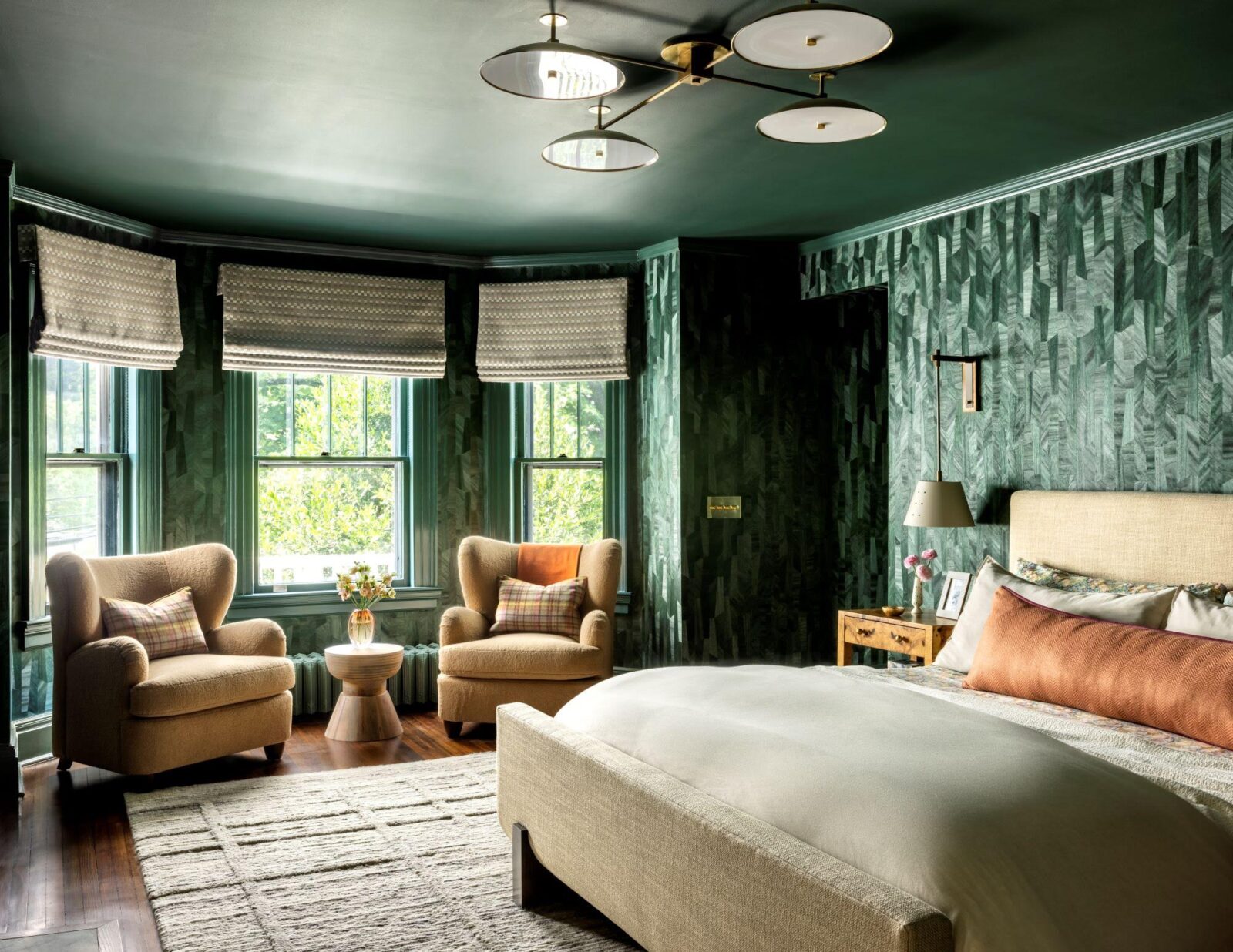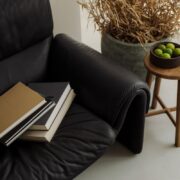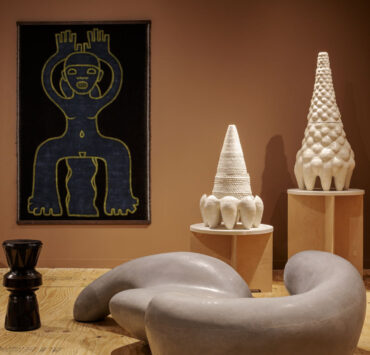I love this time of year, not necessarily for the holidays and certainly not for the short days and cold weather. But I really enjoy the “best of” lists, the looks back at the year that was and predictions for what’s ahead.
Such roundups help to ground and orient us, showing us where we’ve been and where we’re going.
And they’re fun!
We recently shared with you design trends gleaned from 1stDibs’ annual designer survey, but plenty of other forecasters and organizations have been rolling out their home and design trends for the coming year. Here are a few that are showing up across predictions:
* More is more: I will admit that I’m a little tired of minimalist spaces, in which clean, airy and light too often cross into stark, austere and cold. Houzz notes a move toward a “more-is-more approach that layers bold color, pattern and texture.” “Whether you call it maximalism or clutter-core, this design approach celebrates abundance and allows homeowners to furnish their homes with pieces that reflect their personalities,” according to Houzz, a provider of design software, inspiration and community based in Palo Alto, California.
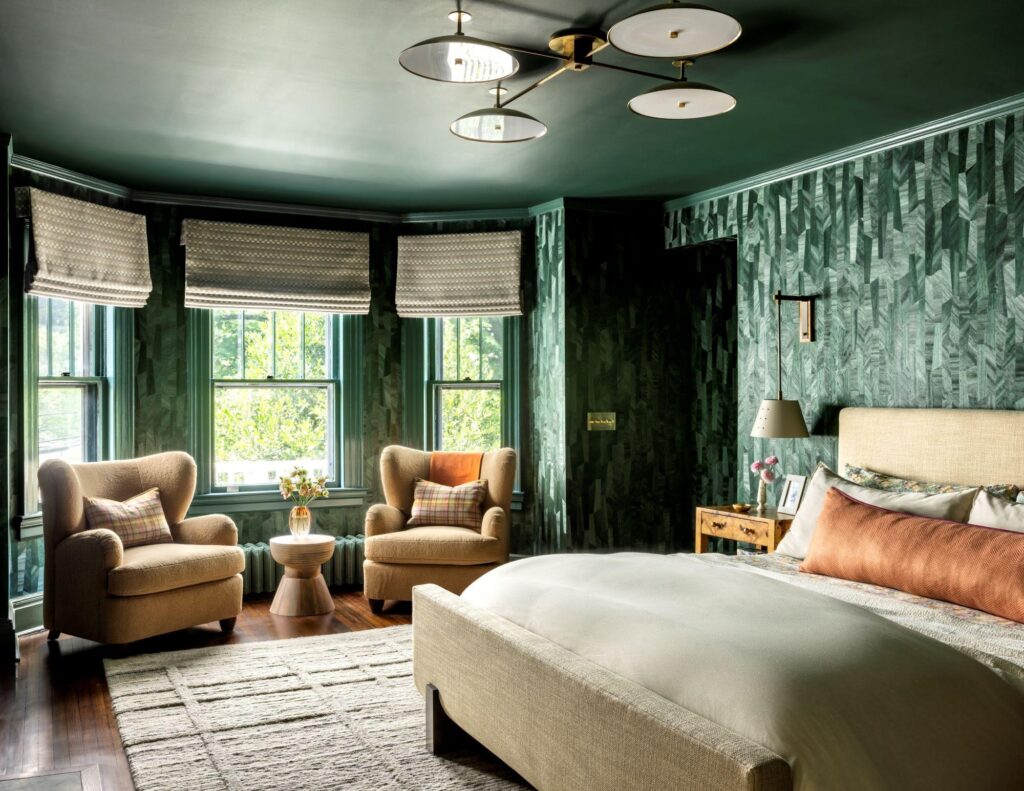
We recently talked with Charleston, South Carolina-based designer and retailer Michael Mitchell, who is known for his “twisted traditional” layered style.
Shea McGee, chief creative officer for the Salt Lake City-based firm Studio McGee also is interested in the idea of lushly mixed patterns. “We’re going to be seeing a lot of fun and bold design elements in 2025, and one we’re really excited about is pattern drenching interiors,” McGee says. “It’s something I’ve always wanted a client to give us free reign on. While at our design firm it’s still a work in progress to fully accept this design trend, we have dabbled with it a bit in terms of unexpected pattern.”
* A little definition: More than 55% of designers say open residential floor plans will continue to give way to more defined spaces, according to a survey of nearly 50 designers from the New York Design Center, which queried designers across the country about their predictions for the coming year.
“More and more clients prefer floor plans with defined rooms for different functions. After living with open floor plans for decades, we are learning that while they have benefits, they also have their drawbacks with the inability to close off areas to conceal untidy spaces to spaces not feeling intimate enough topping the reasons why,” Virginia Toledo, founder of Toledo Geller design firm in Franklin Lakes, New Jersey, told NYDC.
Defined spaces also tie into more maximalist designs, with individual rooms allowing for easier mixes of patterns and materials.
* Privacy, please: The Washington Post ran an article in the fall headlined, “Why Hotel Bathrooms Feel Like Peep Shows,” about hotel bathrooms without doors, screens or curtains that leave many guests feeling overexposed. The open-plan bathroom has long been popular in homes, too, but Houzz sees a move back toward more privacy, especially through the creation of shower rooms. “This style of shower has a glass door leading into a fully enclosed space that creates an intimate, spa-like look and feel.
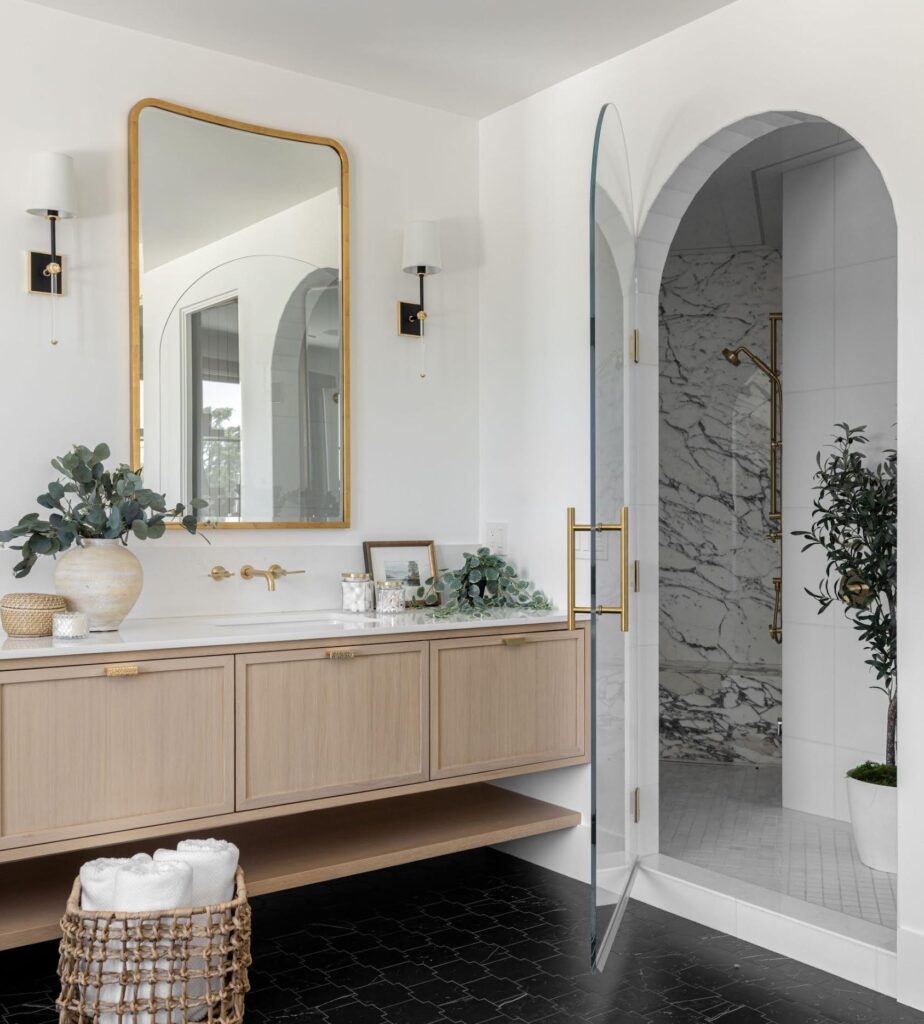
A shower room allows features that require a more sealed-in design, such as steam and sauna functions and aromatherapy and chromotherapy,” Houzz notes. A related trend, Houzz says, is the growing number of narrow wet rooms that combine a separate shower and tub in one space. “While typically seen in spacious, airy layouts, wet rooms are increasingly being adopted for smaller, narrow spaces. Placing a tub at the back of a long room, with a separate shower in front, gives homeowners with tight spaces a wet room arrangement that looks and feels more luxurious than the standard shower-tub combo,” Houzz says.
* A return to tradition: Like others, Wayfair’s 2025 design forecast points to a growing interest in classics. “Celebrate the evolution of traditional style by pulling inspiration from the past into the present. Vintage nods and era layering work to bridge the gap between modern and traditional aesthetics while expressing individuality,” according to the report, released by Wayfair Professional, the business-to-business division of the retailer.
In a related trend, a whopping 87% of designers responding to the NYDC survey said they expect a return to traditional craftsmanship in furniture design in 2025. Hannah Goldberg, founder of Hannah Charlotte Interiors in Ashburn, Virginia, is seeing a backlash to ever-churning trends that have people replacing — and often landfilling — everything from fashion to furniture. “(We see) a desire by our clients to have heirloom, craft-made pieces that will survive them — not pieces they will want to swap out in two to five years. In this way, traditional craftsmanship and handcrafted pieces are definitely a major revival in furniture design,” Goldberg says.
Houzz’s prediction of more English-style kitchens fits under the traditional umbrella, too. “To create a cozy look and feel in a kitchen, some homeowners are drawing inspiration from classic English country style,” according to Houzz. “Think cabinets in rich woods and historical paint colors like moody blues and deep greens. You’ll also find natural countertop materials like soapstone and butcher’s block, as well as large range alcoves, wood ceiling beams and collected looks that appear pieced together over time.”
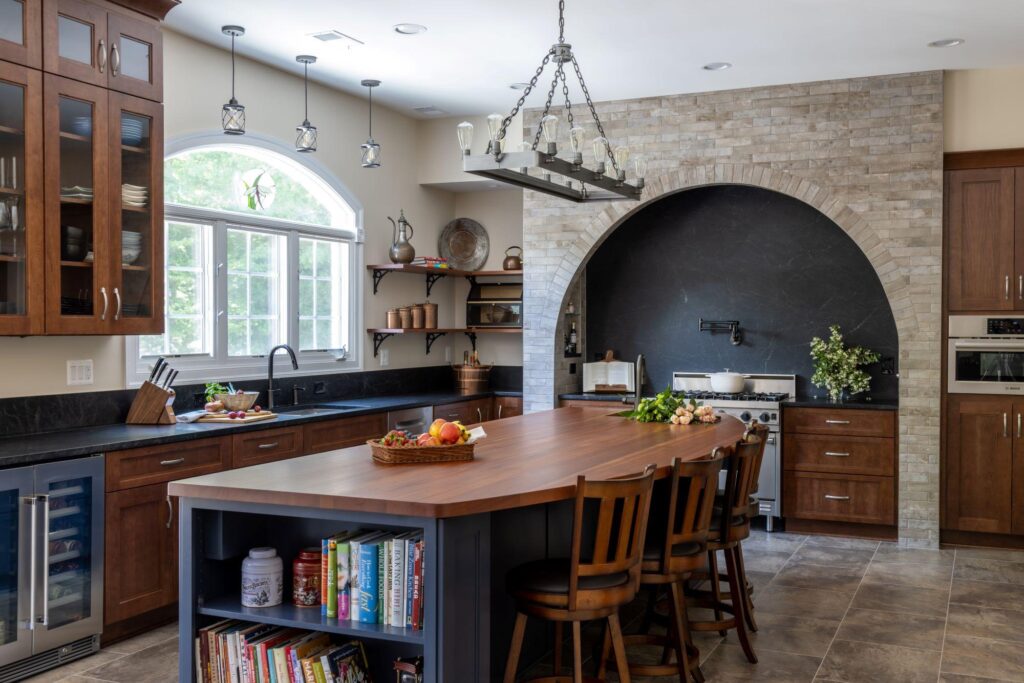
* Getting smarter and smarter: While many of these other trends harken back to the past, this one is all about the high-tech future. More than three-quarters of designers surveyed by NYDC said they believe that clients’ desire for smart homes will make smart home integration a primary consideration in interior design in 2025.
Radhika Vydianathan, founder and principal designer for Atlanta-based Kalaa Chakra Interiors, believes this will be especially true for new home construction and, in particular, to control window shades. But, she notes, there’s a tension between people’s need for technologically integrated homes and their desire to unplug.
“I prefer to make minimal use of (smart home technology),” she says. “Because I want my clients to have more downtime with family … and not on their phones monitoring all apps.”
Designers can help guide homeowners in deciding which smart home features will be more valuable to them — and helping them plan for future upgrades.
